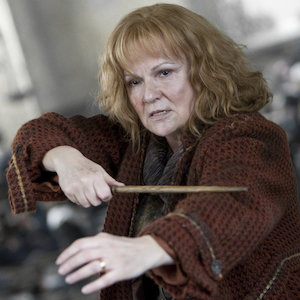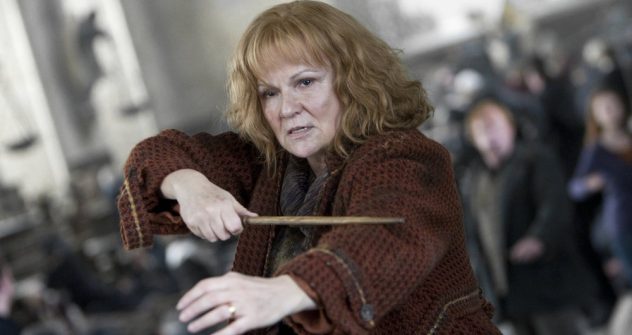
There’s an English joke…Someone from Manchester is asked what they think England’s second city is and they reply “Manchester”. Someone from Birmingham is asked what they think England’s second city is and they reply “Birmingham”. Someone from Newcastle is asked what they think England’s second city is and they reply “Newcastle”. Someone from Liverpool is asked what they think England’s second city is and they reply “London”. Obviously, the punchline changes depending on where whoever is telling the joke comes from.
You may well be wondering what I’m wittering on about this time. The short answer is that Julie Walters’ first TV appearance was in a drama series filmed in Birmingham’s Pebble Mill studios called Second City Firsts. This was a series of series of half hour plays by, mainly, first time writers. This play was called Club Havana and also starred another newcomer, Don Warrington playing Dave. Dave is newly arrived in the UK having been left in Trinidad by his mother. He meets and falls for Terry (Julie Walters) but trouble arises.
Join the PERA (Personal Entertainment Research Assistant) waitlist.
The World's Most Indispensable Movie App
The RunPee app tells you the best times to
run & pee during a movie
so you don't miss the best scenes.
Download the RunPee app.
100% free (donation supported)
Early Days
Dame Julia Mary Walters DBE was born in Edgbaston, Birmingham in February 1950 to a postal clerk from County Mayo, Ireland, and an English builder and decorator. It was a complicated birth, the umbilical cord was wrapped round her neck and a priest was actually called to give both mother and baby the Last Rites. Miraculously, she was delivered safely and survived. Even more miraculous given that she was the youngest of five children but only the third to survive. She was also the only daughter.
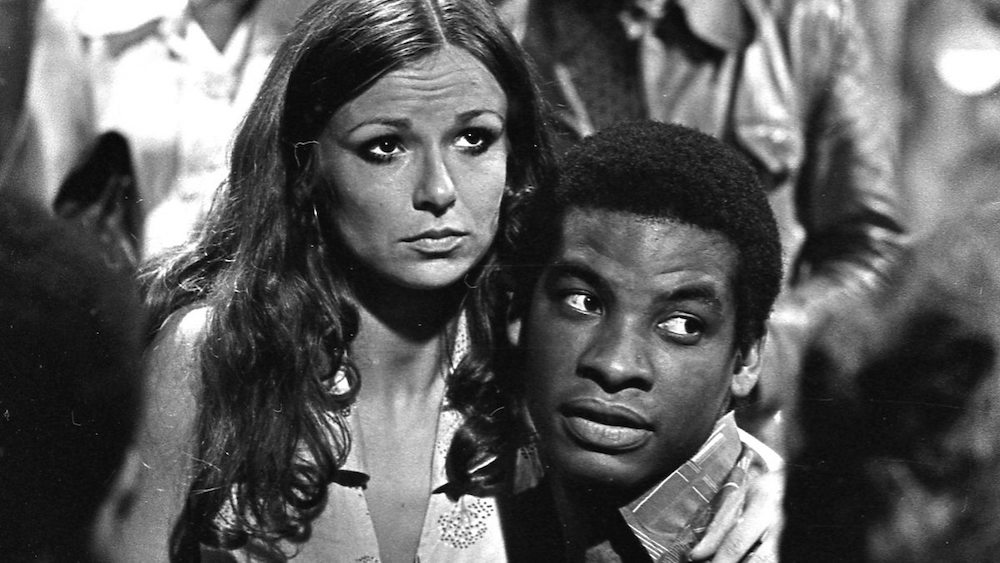
Dame Julie had a fairly standard education for that time; single sex schools were the most common when I was growing up and I’m only a few years younger. Admittedly, single sex primary schools were less common so attendance at St Paul’s School for Girls may have been a wee bit on the unusual side. Like me, she must have passed her eleven plus because she went on to Holly Lodge Grammar School. Unlike me, though, she was asked to leave during her Lower VIth because of her “high jinks”.
What people are saying
about the RunPee app.
February 13, 2019
RunPee is an excellent app that has all the info you need when going to the movies. Whenever I go to a movie, I open up the app and know when the best time to dip to the bathroom is. They have pee times for movies just a few hours after their release and it shows the dedication the team has for the service. Definitely recommend for any movie-goer.
View all reviews
Apple App Store | Google Play Store
Download RunPee app
Dramatic Aspirations
She had had dramatic aspirations from an early age. In her first year at Holly Lodge Grammar School, she made her stage debut in a school production of A Midsummer Night’s Dream. However, her mother was more of the “get a proper job” school of thought. It was accepted that Julie wouldn’t ever be banging on the door of academe so, following her abrupt departure from secondary school, she got a job in insurance aged fifteen. After a few years she started training as a nurse, which was her mother’s first choice for her. She was working on the ophthalmic, casualty, and coronary care wards during her time with the NHS at Queen Elizabeth Hospital in Birmingham.
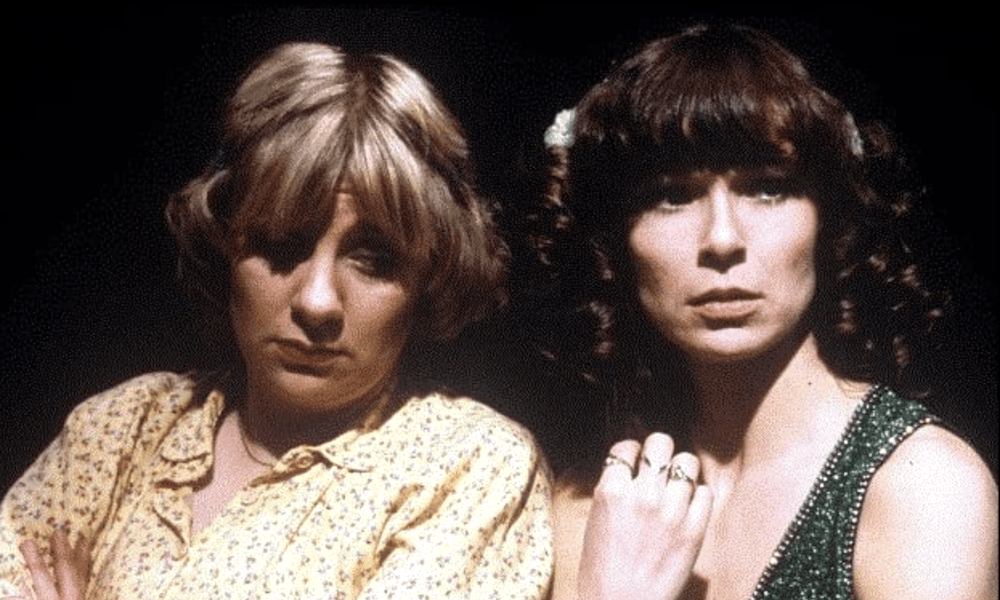
But then came the occasion that led to young Julie’s dream of an acting career taking the first steps towards becoming fulfilled. The Manchester Polytechnic School of Theatre (which is now the Manchester School of Theatre) opened in 1970 and the magnificent Ms Walters signed up. The following year she met someone who would be a major part of her professional life into the new millennium. Julie met a young person auditioning named Victoria Wood. Now I appreciate that most people outside of the UK may never have heard of Victoria Wood but, trust me, she was a big deal over here up until her untimely death from oesophageal cancer in 2016.
Famous Friends
This is the point when I get all warm and fuzzy. In the mid seventies Julie started working at the Everyman Theatre in Liverpool. Taking ‘A’ Level English in the seventies meant that I did get to visit the Everyman quite regularly. At the time I didn’t realise the stature of the people I was seeing! I definitely saw George Costigan, Bernard Hill, Trevor Eve, and Barbara Dickson. Others I probably saw included Pete Postlethwaite, Jonathan Pryce, and Bill Nighy. I also saw works by Alan Bleasdale and Willy Russell, both of whom went on to write roles especially for Dame Julie.
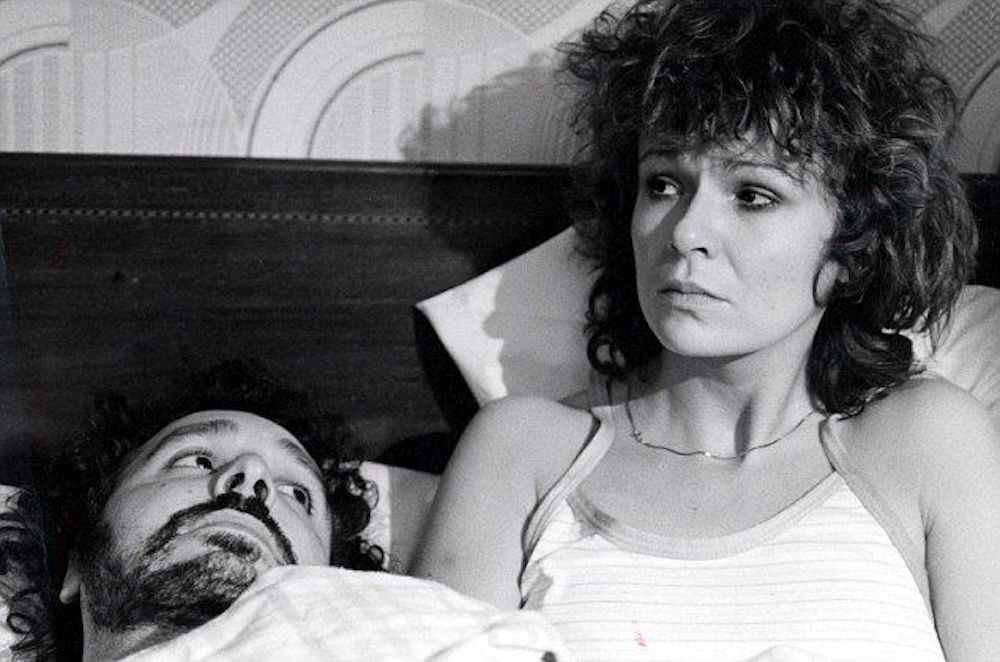
The rest of the seventies was spent with Julie playing a variety of small parts on stage and screen. I may have actually seen her in The Liver Birds. It was on in our house from the start in 1969 but I may have lost interest by the time Ms Walters got to play “Girl In Surgery” in 1977. Similar small roles followed until nearing the end of the decade when there was the first time that I can actually remember seeing her on TV for the first time. It was another of those drama series that were on all the time back then called Screenplay.
Birth Of A Double Act
The actual play was titled Talent and had been written, originally for the stage, by her friend and colleague Victoria Wood. It features two friends, the plain, overweight Maureen, and her more glamorous friend Julie. Julie has dreams of escaping the drudgery of her life by becoming a big star. To this end, they are at a talent show in Bunters Nightclub. On the stage, Maureen was played by Victoria Wood and Julie by Hazel Clyne. After opening at the Crucible, Sheffield, it transferred to the ICA, London.
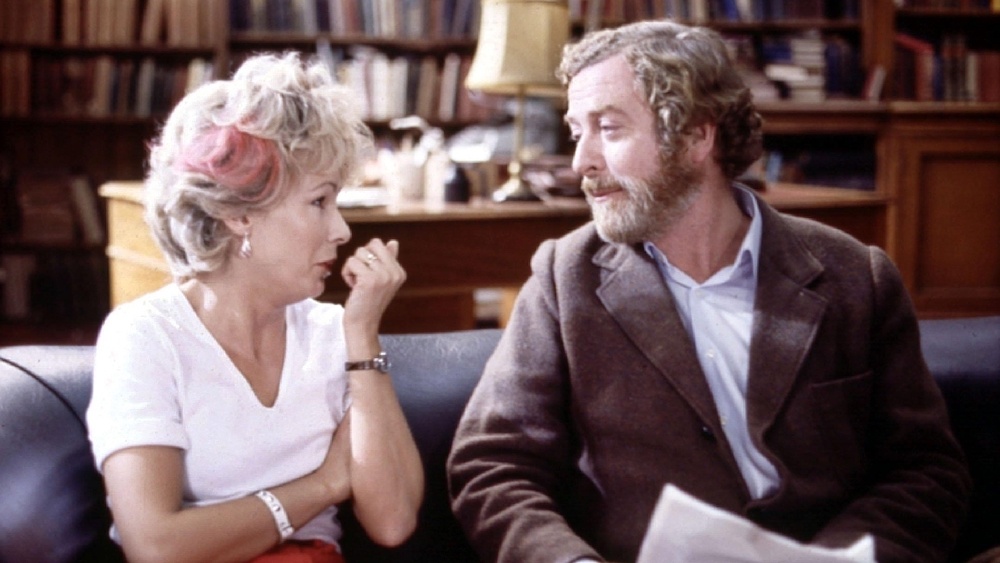
At some point it was seen by Peter Eckersley, a producer at Granada Television, and he commissioned a TV screenplay to be written. When Victoria Wood had written the original stage version, the part of Julie had been written with Julie Walters in mind but, unfortunately, she had not been available. Fortunately though, she could make the TV version and, as a result, Wood and Walters made their TV debut together. They would appear together repeatedly until Victoria Wood’s Mid Life Christmas in 2009.
Educating Rita
June 1980 saw the premiere of Educating Rita at the Donmar Warehouse. It had been commissioned by the Royal Shakespeare Company from Willy Russell who had Julie in mind from when they had worked with her back in the Everyman, Liverpool. It tells the story of Rita, a hairdresser who wants to improve her station in life by taking an Open University degree in English Literature. Her tutor is a middle-aged, disillusioned, alcoholic called Frank. Both their lives are affected by them working together. The premiere featured Julie Walters as Rita and Mark Kingston as Frank.
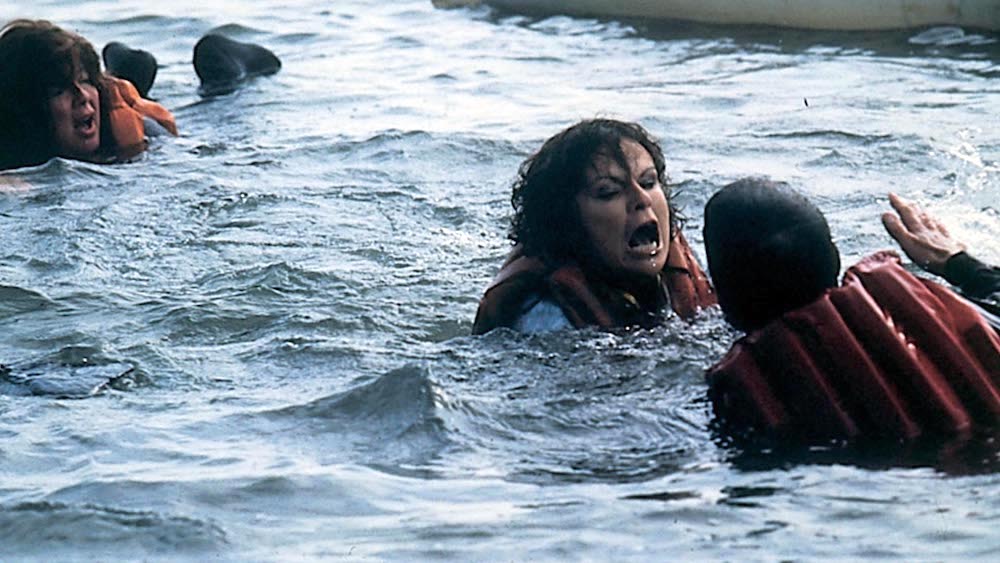
Shortly afterwards the film version started being developed. Fresh from his time directing a couple of James Bond films (The Spy Who Loved Me and Moonraker) Lewis Gilbert started the task of getting Educating Rita on to the big screen. He had trouble raising the funding for it as there were no ‘bankable’ names in front of the camera. At one point Columbia were pushing for Dolly Parton to be cast as Rita! I can’t begin to imagine how it would have worked out and what changes would need to be made for that to work.
Dolly Parton? Really?
Fortunately, the very bankable Michael Caine came on board as Frank which meant that Julie Walters could reprise her stage role and make her feature film debut. As we all now know, it was a runaway success. Caine and Walters were both nominated as the best actors for the Oscar, BAFTA, and Golden Globe competitions; they both won in the BAFTA and Golden Globe competitions. Educating Rita also won the BAFTA for best film. I remember seeing it in the cinema when it came out. I didn’t realise it was Julie’s feature debut; I’d seen her on TV the year before and didn’t twig that it was her first film.
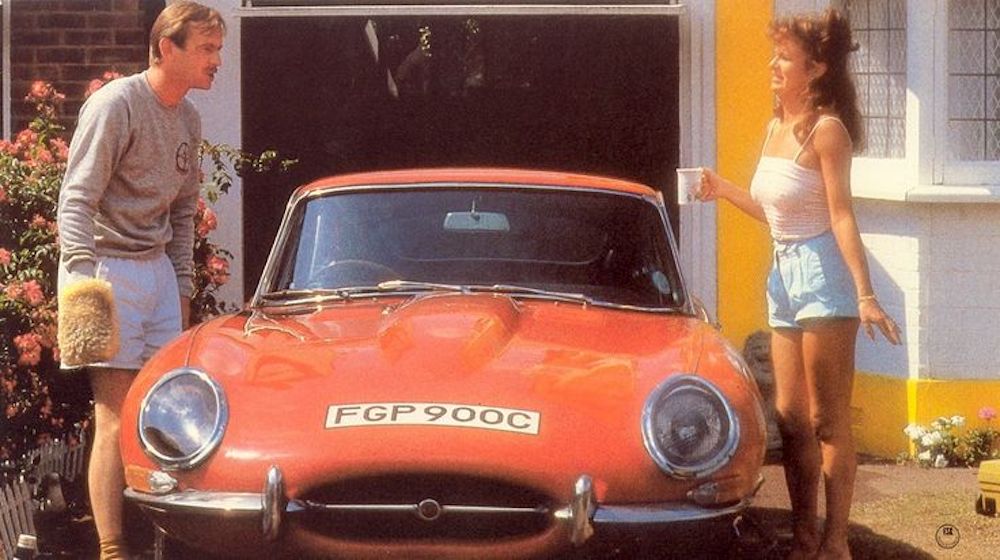
The thing that I’d seen Julie playing on TV was a second part that had been written especially for her, this time by Alan Bleasdale and it was The Boys From The Blackstuff. This was a five part spin off from a play called The Black Stuff which told the story of a group of men from Liverpool working as tarmac layers on a road near Middlesbrough. The Boys From The Blackstuff comes back to catch up with the main characters who now find themselves unemployed and struggling to make ends meet in Thatcher’s Britain.
The Black Stuff
The Boys From The Blackstuff was a string of water cooler moments. Well, it would have been if water cooler moments had been a thing back in the early eighties. One of the main characters was named Chrissie Todd (Michael Angelis) and Julie played his wife Angie. Their story examines the domestic pressure that unemployment and the attentions of the benefit fraud officers place on families. The series is made up of profoundly moving human dramas following the misery and despair surrounding the characters’ struggles to survive.
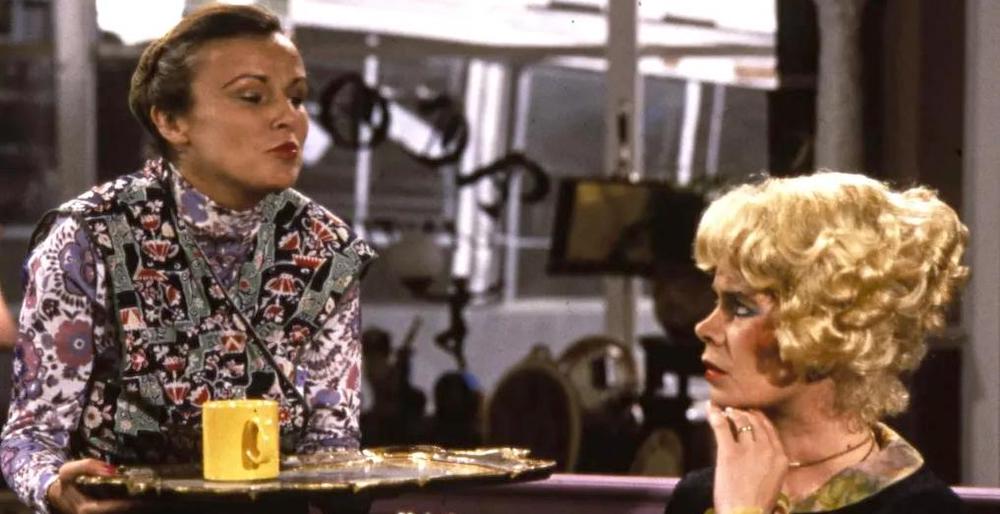
The next time I saw Julie in a film it was in something called Car Trouble and came out in 1985. This was unusual in that it was a ninety minute film based on a joke. For the life of me I can’t remember the punchline but, as I remember, it did follow the joke fairly closely but with a bit of fleshing out. As you might expect from spinning a three minute joke into an hour and a half film. It is also notable as being the penultimate film outing for Ian Charleston, one of the leads in Chariots Of Fire.
Off To Hollywood?
Also out that year was another comedy called She’ll Be Wearing Pink Pyjamas. This was about a group of eight women from a variety of backgrounds who go on an all female survival course in the Lake District. It doesn’t get shown often which is a shame as it was quite amusing. At least that’s how I remember it but it is pushing forty years since I’ve seen it. It is noted for having the most unselfconscious nude shower seen featuring the women. Apparently, as well as the usual closed set, Dame Julie insisted on all the crew being naked as well.
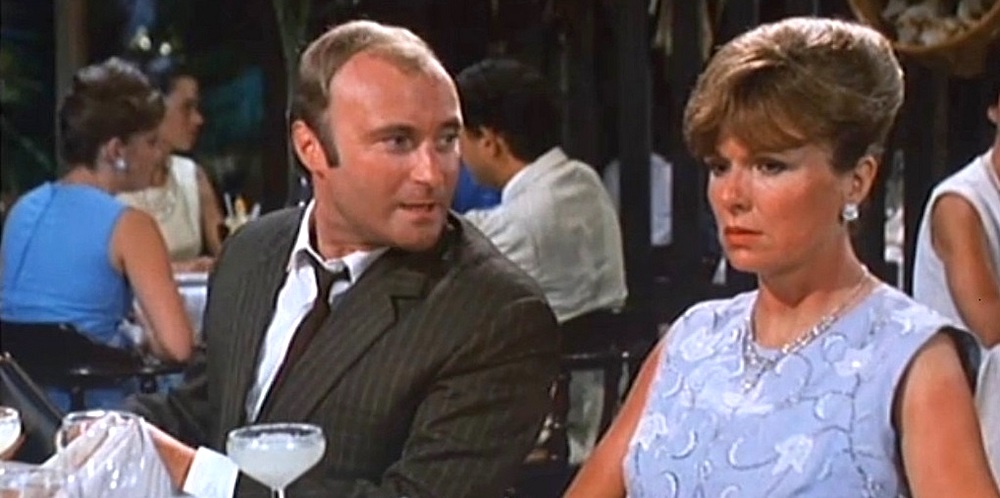
After her breakout role in Educating Rita, she was given an agent in the United States and offered several scripts. However, she decided that most of them weren’t for her and decided to stay home. Her career in the UK focused mainly on stage and television projects. Obviously there were various outings with the frequently aforementioned Victoria Wood: the most well known was a sketch in Victoria Wood: As Seen On TV called Two Soups. Trust me, just Google Two Soups and watch what pops up.
How Old Is She?
It is an early example of Julie Walters playing way above her age. She plays a, probably, septuagenarian waitress despite being well under half that age. This was a regular turn of events for Dame Julie especially when working with Victoria Wood. Possibly her best known older character was Mrs Overall in Acorn Antiques; This started off as a regular sketch in Victoria Wood: As Seen On TV before being revived, on the stage, as a musical version.
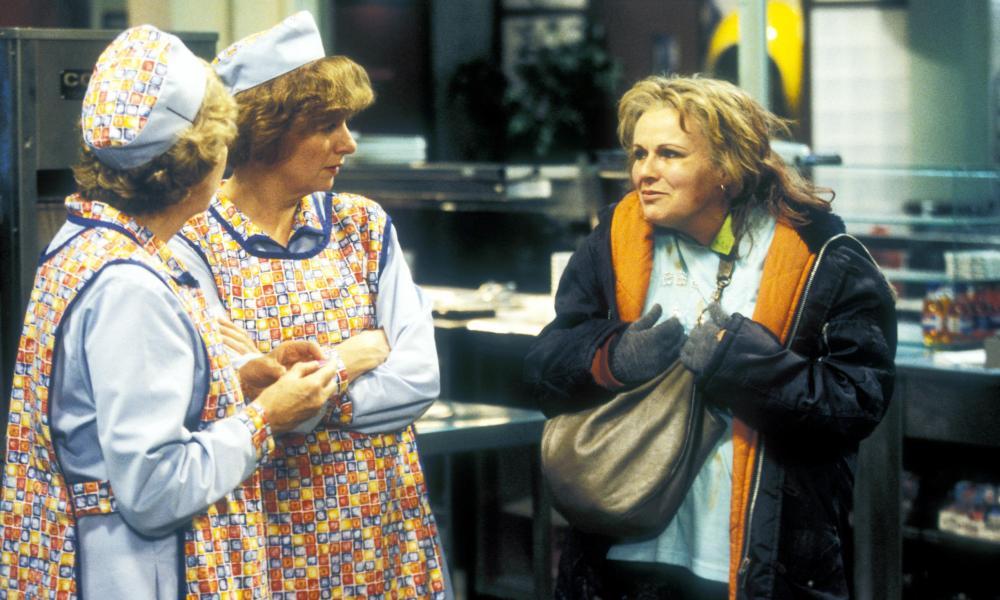
It is a shameless parody of low quality British sitcoms like Crossroads and Waggoner’s Walk. All the wobbly sets, storyline inconsistencies, erratic credits, rough camera work, and missed cues were all intentional. Frequent collaborators Celia Imrie, Duncan Preston, and Kenny Ireland all had regular parts as well as Wood and Walters themselves. Julie Walters played Mrs Overall, an elderly tea lady, who believes all problems can be solved with a nice cup of tea, a biscuit, and a chat.
Overall, Boadicea Overall
Another TV series had her playing a character nearer her real age; Pauline Mole in The Secret Diary of Adrian Mole, Aged 13¾. I remember the furore surrounding the book when it came out; it was hilarious! It is meant to be the diary of a teenager running from 1st January 1981 to 3rd April 1982. Pauline is Adrian’s less than enthusiastic mother; “I asked her about my Family Allowance today, she laughed and said she used it for buying gin and cigarettes.”
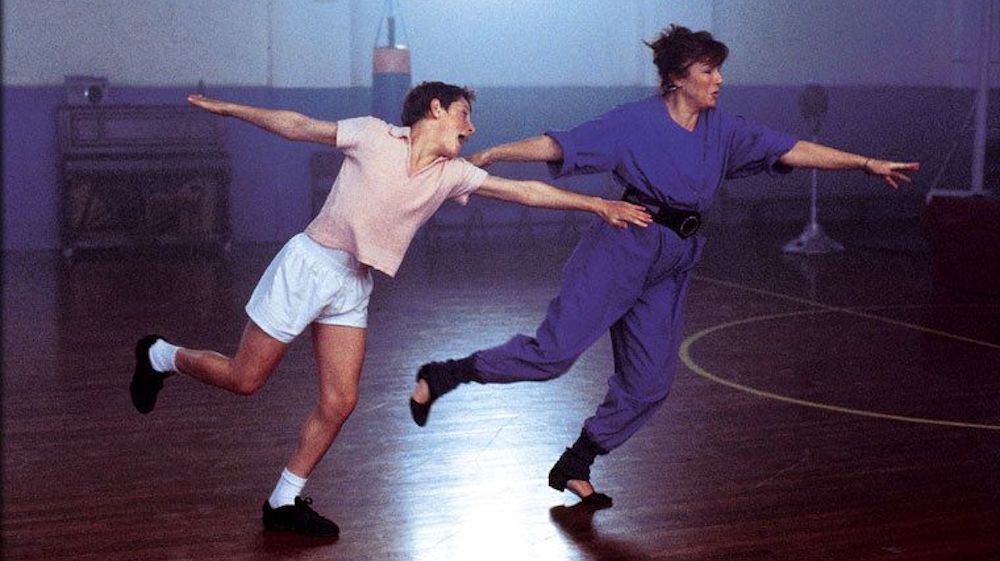
The end of the eighties saw Julie making a couple of films. They were British made as she hadn’t got over her reluctance to go to Hollywood. They were also both based on true events. The first was called Personal Services. This was based on the adult life of Cynthia Payne; her younger years were portrayed in Wish You Were Here. Madame Cyn ran a brothel in Streatham, SW London. Men paid with Luncheon Vouchers to dress up in lingerie and be spanked by young women. Personal Services was directed by former Python Terry Jones and became his third film to be banned in Ireland!
As Banned In Ireland!
The other film was Buster. This was based on the life of ‘Buster’ Edwards; one of the perpetrators of the Great Train Robbery. Originally set to play Edwards was Bob Hoskins but he dropped out because he felt he had played a similar role already in The Long Good Friday and Mona Lisa. Phil Collins got the part after director David Green saw him in Miami Vice. Julie played June Edwards, wife of ‘Buster’.
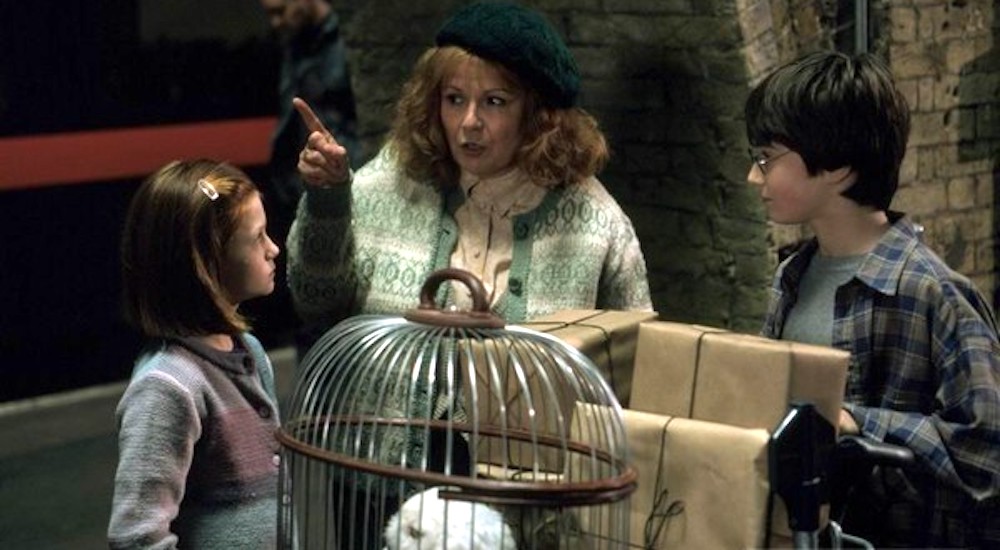
Around this time Julie made an appearance in a short series of monologues written by the incomparable Alan Bennett. The series was titled Talking Heads. It consists of six half hour monologues delivered straight to camera. They were about a variety of subjects but had recurring themes such as death, illness, guilt and isolation. They also tended to have a bitter-sweet hint to them. Two seasons were made; one in 1988 and another in 1998. They were remade with new performers in 2020 and have found their way on to the “A” Level English Literature syllabus as well as being shown in the PBS Masterpiece Theatre programme.
Talking Heads
Some top notch actors have appeared in Talking Heads; Maggie Smith, Penelope Wilton, Eileen Atkins, Patricia Routledge, and Thora Hird appeared in the initial two series while Imelda Staunton, Martin Freeman, Jodie Comer, Lucian Msamati, Leslie Manville, Maxine Peake, and Kristin Scott Thomas are among the actors in the remakes. The 2020 remake was filmed during the COVID-19 lockdown and, because of the restrictions, people over 70 couldn’t be used so the Thora Hird segments were replaced by two new pieces written by Alan Bennett.
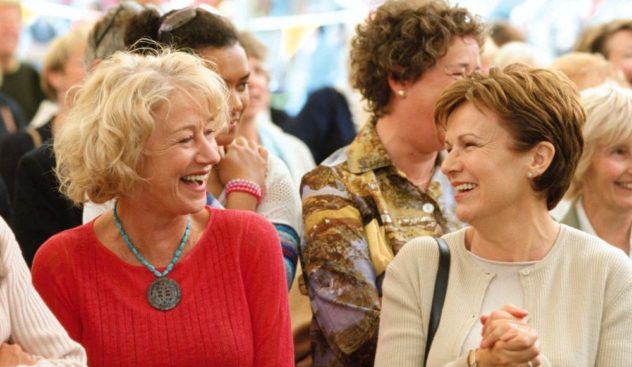
The next project that I remember Julie Walters appearing in came out in 1991 and was another that had everyone talking about it in work the next day…G.B.H. It was written by Alan Bleasdale who had been the writer of Boys From The Black Stuff and was just as topical and controversial. Whereas Boys From The Black Stuff was about the torment and travails of life in Thatcher’s Britain, G.B.H. took a different political scenario as its inspiration; one that was surprisingly close to my home!
Great British Holiday
Back in the early eighties I had returned to North West England after nearly a decade in London. The city of Liverpool was a Labour council which wasn’t that unusual. The leader was a chap called John Hamilton but everyone knew that the real power lay with the deputy, Derek Hatton. He was a member of Militant, a Trotskyist group within the Labour Party, and they were proving to be a thorn in the side of Margaret Thatcher. Derek Hatton was known for his extreme views, his strident delivery, and sharp suits.
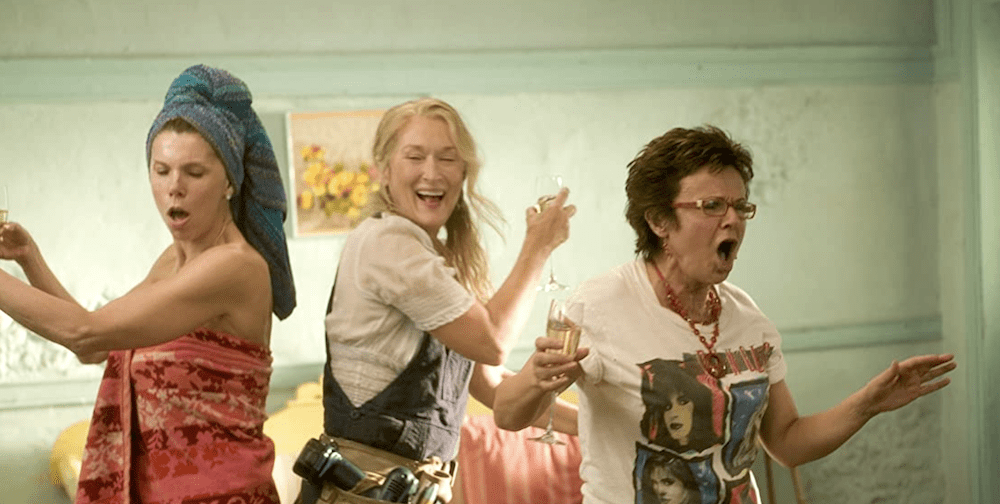
The antagonist in G.B.H. was a well dressed, extreme Left, local politician with a strong delivery named Michael Murray. He was the leader of an unspecified council in the North West of England. The resemblance Derek Hatton could not have been accidental. Hatton was facing charges when the first episode was transmitted and Merseyside Police asked for advance copies of the rest of the series to see if they might prove prejudicial to the case. Channel 4 declined and Alan Bleasdale downplayed the connection. Derek Hatton commented “the only person in the world who does not seem to think that Michael Murray is me, is Alan Bleasdale”.
Family Over Fame
All this furore meant huge viewing figures. To be honest though, I think it would have been a hit anyway as Robert Lindsay played Michael Murray, and Michael Palin was Jim Nelson, a special school head who was upsetting Murray’s plans. Originally the part of Murray was offered to Michael Palin as Robert Lindsay was tied up elsewhere. That project fell through and Robert Lindsay got the part that had been written for him. Once again Dame Julie was playing someone much older than her actual age; she was playing Mrs Murray, Michael Murray’s mum! In real life Julie Walters is actually three months younger than Robert Lindsay.
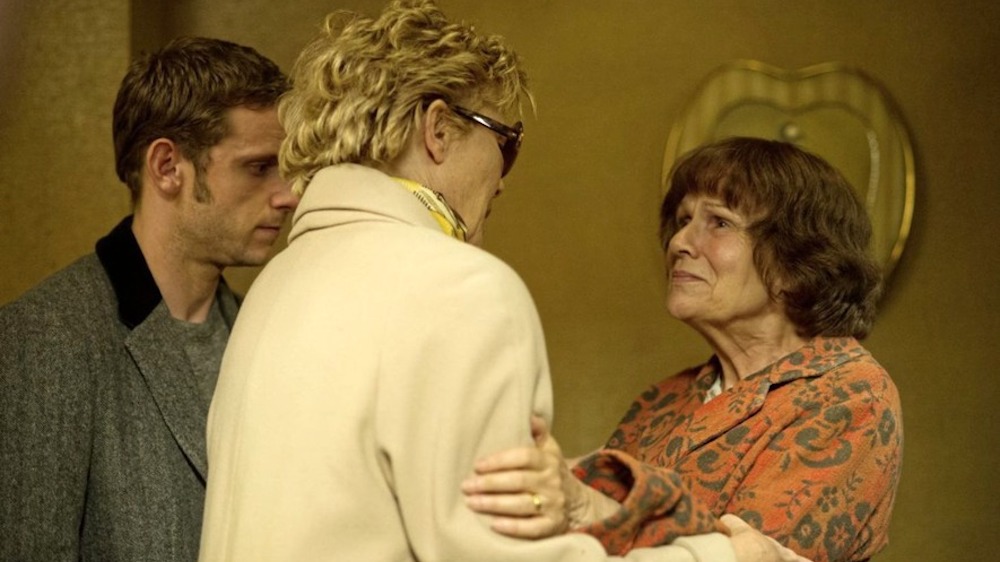
Around this time Julie had cut back on the amount of acting she was doing due to family circumstances. Her daughter, Maisie, had been born in 1988. Maisie fell ill with leukaemia at the age of two. She eventually recovered and inspired her mother to write the book Baby Talk in 1990. Doubtless shaken by those events Julie took a seven year long break from acting in theatre, mostly in order to spend time with her recovering daughter.
Back To The Big Time
Throughout the nineties Dame Julie was seen in a few films but mainly in TV series including four projects with her close friend, Victoria Wood. As an aside, my wife and I like to watch old comedy shows while we have tea in the evening. At the time of writing we are half way through dinnerladies. This is a sitcom set in the canteen of a Manchester factory. Brenda (Victoria Wood) is the kind and dependable deputy manager of the kitchen. Once again the calendar gets thrown out as Julie plays Petula Gordeno, Brenda’s selfish, manipulative, and delusional mother. Victoria Wood is three years younger than Julie Walters.
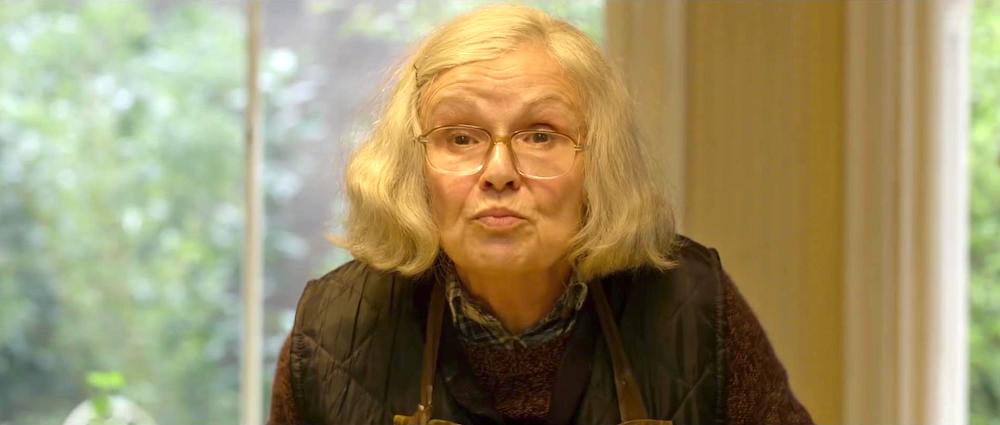
The new millennium saw Ms Walters once again making her mark on the big screen. First up was Billy Elliot. As is familiar to almost everybody now, Billy Elliot is the story of a miner’s son sent off to learn boxing but ends up falling in love with ballet instead. It marked the debut of Jamie Bell who went on to win the BAFTA for Best actor in a leading role. Julie won best supporting and they all won best film. Julie was also nominated for her second Oscar.
You Thought That Was The Big Time?
The following year came the one that the whole world, more or less, saw her in; Harry Potter and the Philosopher’s Stone. She played Molly Weasley, the matriarch of the Weasley family, in the Harry Potter film series which ran from 2001 until 2011 apart from Harry Potter and the Goblet of Fire. Apparently it was due to Mike Newell making the decision to pare down the long, long story into one two and a half hour long film rather than to split it into two parts as the studio originally planned.
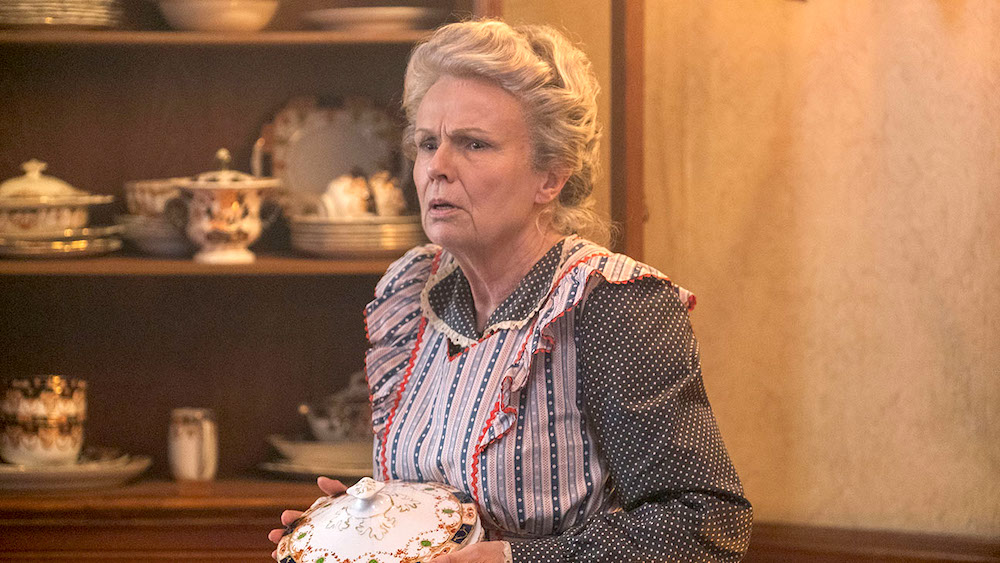
Still, she did return in all the subsequent films and was a magical bruiser in the Battle for Hogwarts! But, as is so often the case, things may have proven to be very different. Rosie O’Donnell offered to play the part for free but was turned down as Jo Rowling wanted an all British cast. A more credible threat to Julie being Molly came in the form of Lesley Nicol (Mrs Patmore in Downton Abbey). Lesley was being considered for the role and, while this may seem like heresy, could have made a good Mrs Weasley in my opinion.
A Very Busy Millennium
And That was just the start of a very big millennium for Julie Walters. Six Harry Potters, two Paddingtons, two Mamma Mias, a Mary Poppins, and a whole host of other stuff. TV mini series, documentaries, TV films, and much more. One film I saw her in that particularly resonated with me was Film Stars Don’t Die In Liverpool. Why did it resonate? Perhaps that is a tale that may be told in a future Rewatch Review article. I’ll just say for now that Yvonne Fair said it best…
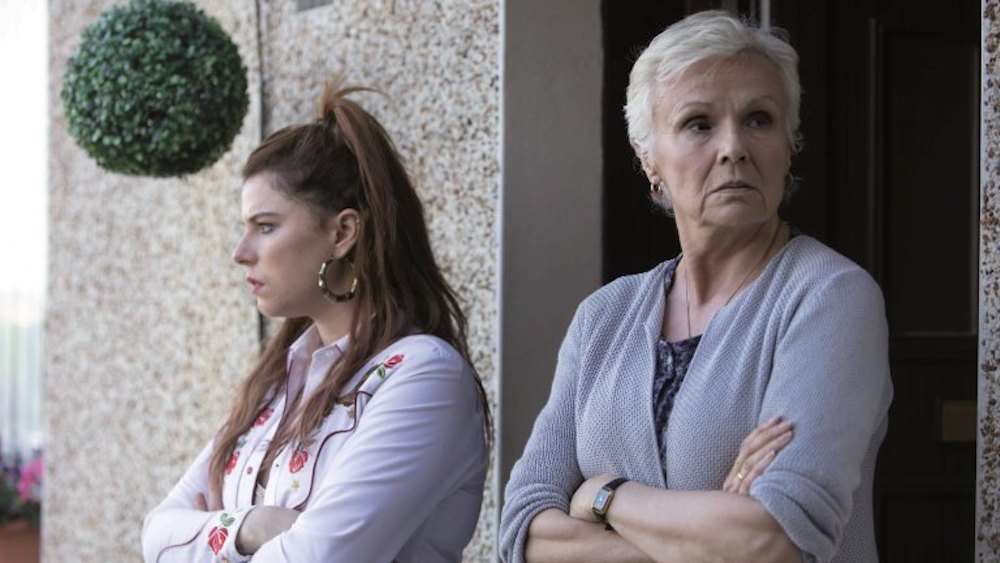
To wrap up I’m going to just throw in a few snippets that caught my eye. Eon Productions don’t make a lot of films that aren’t James Bond related. One of those exceptions was Film Stars Don’t Die In Liverpool and Dame Julie Walters suggested herself as a possible female villain in No Time To Die while working with Barbara Broccoli on it. I don’t know about you but I could see it working! Despite appearing nude in She’ll Be Wearing Pink Pyjamas she had minor qualms before filming her nude scene for Calendar Girls, because it highlights her least favourite part of her body; Her shoulders.
Record Breaker
She has won the British Academy Television Award for Best Actress four times, more than any other performer, for her roles in My Beautiful Son (2001), Murder (2002), The Canterbury Tales (2003), and Mo (2010). Julie and Helen Mirren are the only actors to have won this award three consecutive times, and Walters is tied with Judi Dench for most nominations in the category with seven. She appears in three of the five highest grossing British films at the UK box office: Harry Potter And The Philosopher’s Stone (2001), Mamma Mia! (2008) and Harry Potter and the Deathly Hallows: Part 2 (2011). She is the only performer to achieve this feat.
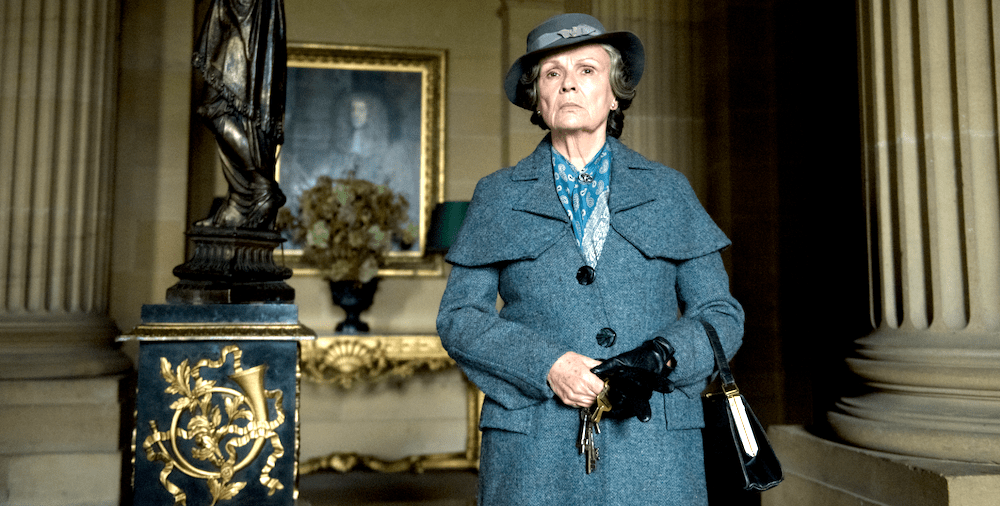
Sadly though, in 2018 Dame Julie was diagnosed with cancer of the bowel. She underwent surgery and chemotherapy and it does seem to be in remission. In 2020 she announced that she would be taking a step back from acting, particularly from large and demanding film roles. Later that year, however, she stated that she would make an exception for roles that she was ‘really engaged’ with, including Mamma Mia 3!, which is currently in development! If anybody deserves to be known as a national treasure it is, surely, Dame Julie Walters.
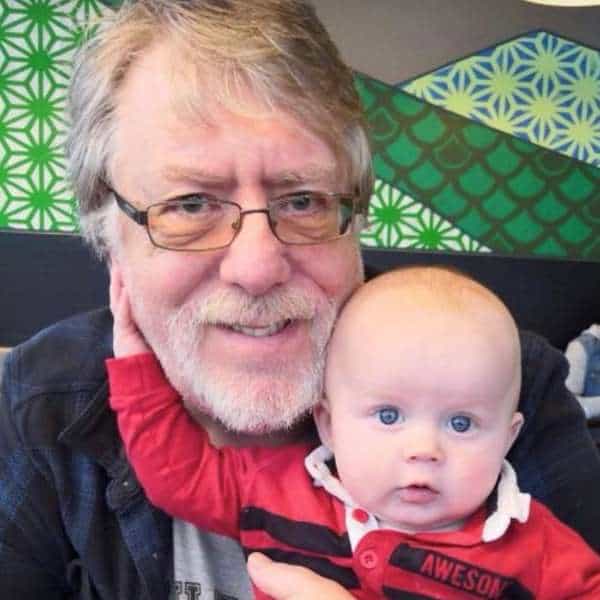
Former teacher, lecturer, homelessness administrator, pharmacy dispenser now happily retired, happily married, and a very happy granddad. I live next to the Mersey but on the side Daniel Craig and Taron Egerton come from rather than the side the Beatles came from!

